
Purple!
Yes, purple.
You need more of it in your garden.
We’ve all got plenty of green going on, but what you really need is more purple. You may not realize it, but there’s more than meets the eye to vegetables with this uncommon hue.
A naturally occurring compound called anthocyanin is responsible for the purple pigmentation of many plants. (Red and blue, too!)
Great, Tracey! So what?
Well, anthocyanins do more than make for beautiful veggies. (And you have to admit, they’re quite lovely.) Anthocyanins are a type of flavonoid, and flavonoids are antioxidants.
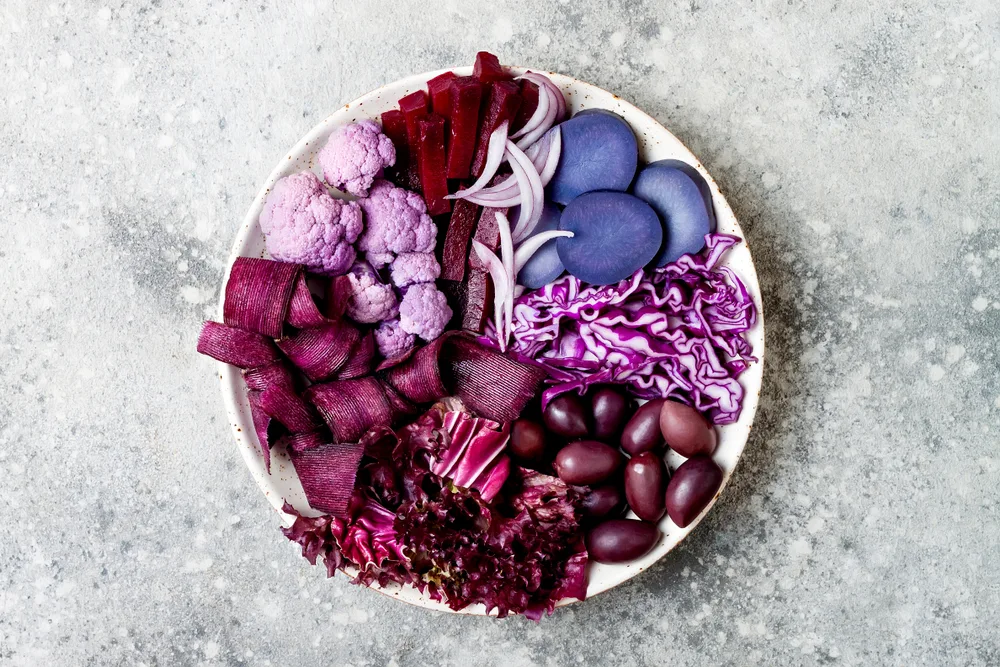
But the good news only starts there.
Whether via clinical trials, in vivo or in vitro, the research results show this purple packs a punch. It turns out these purple-pigment-making compounds come with a slew of health benefits.
- Improved vision
- Lower blood pressure
- Diabetes prevention
- Inhibited tumor growth
- Anti-inflammatory
- Anti-bacterial
The research suggests these results may be synergistic – anthocyanin working with other compounds within the plant. You can read all about it by clicking here. More research will provide better answers, but it’s still one more reason to eat your veggies.
Especially the purple ones.
I’ve gathered up fifteen crunchy purple vegetables to plant in your garden. You’ll see a few familiar favorites here, as well as plenty of veggies you may not have realized have a purple variety. Plant a few, heck, plant them all!
1. King Tut Purple Pea
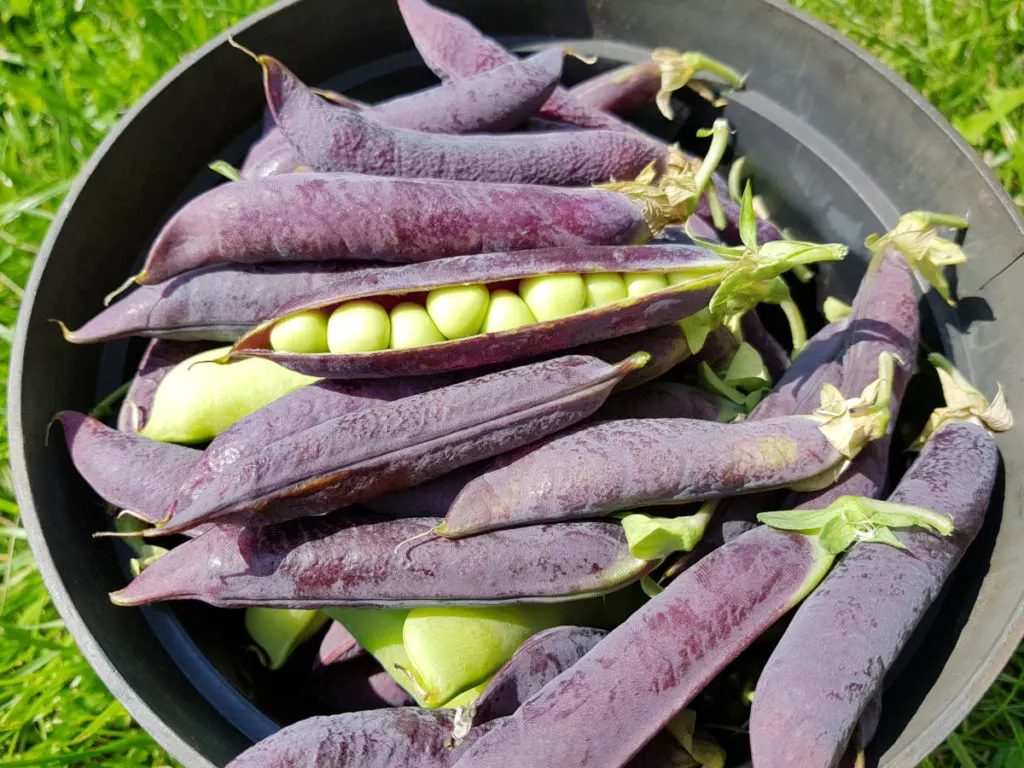
This heirloom pea has stunning purple pods. Eat them when they’re young and tender for an excellent snow pea. Or harvest them when they’ve reached maturity for a great shelling pea.
According to Baker Creek Heirloom Seeds, there seems to be some confusion about how this purple pea came by its name. Some say ancient seeds were found in the boy king’s tomb in Egypt and were successfully propagated. Others say the pea is named in honor of English nobility, Lord Caernarvon, because the pea came from his country estate. The name was a nod to Caernarvon’s financing of the search for King Tut’s tomb.
2. Blue Berry Tomato
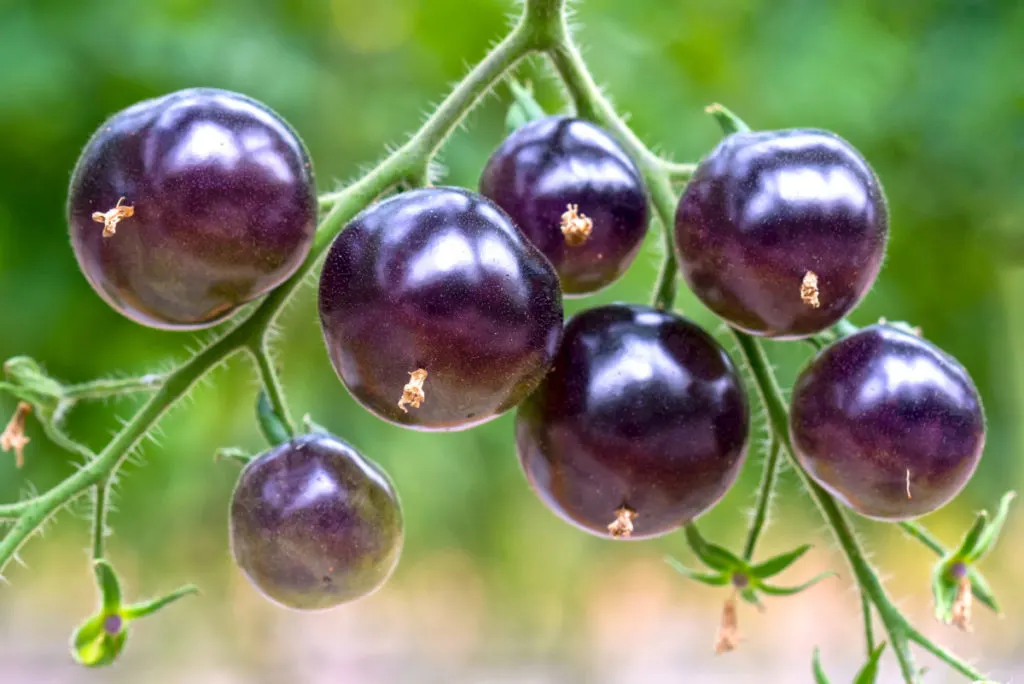
If you’ve ever grown the Atomic Cherry Tomato, then you’re familiar with the fun varieties Brad Gate’s of Wild Boar Farm is coming up with.
Give his latest creation, the blue berry tomato, a try. It’s a sweet cherry tomato that’s a prolific producer all season long. Use these gorgeous tomatoes to make a batch of fresh salsa that will match your blue corn tortilla chips.
Don’t forget to throw in a few of the tomatillos further down this list.
3. Red Express Cabbage
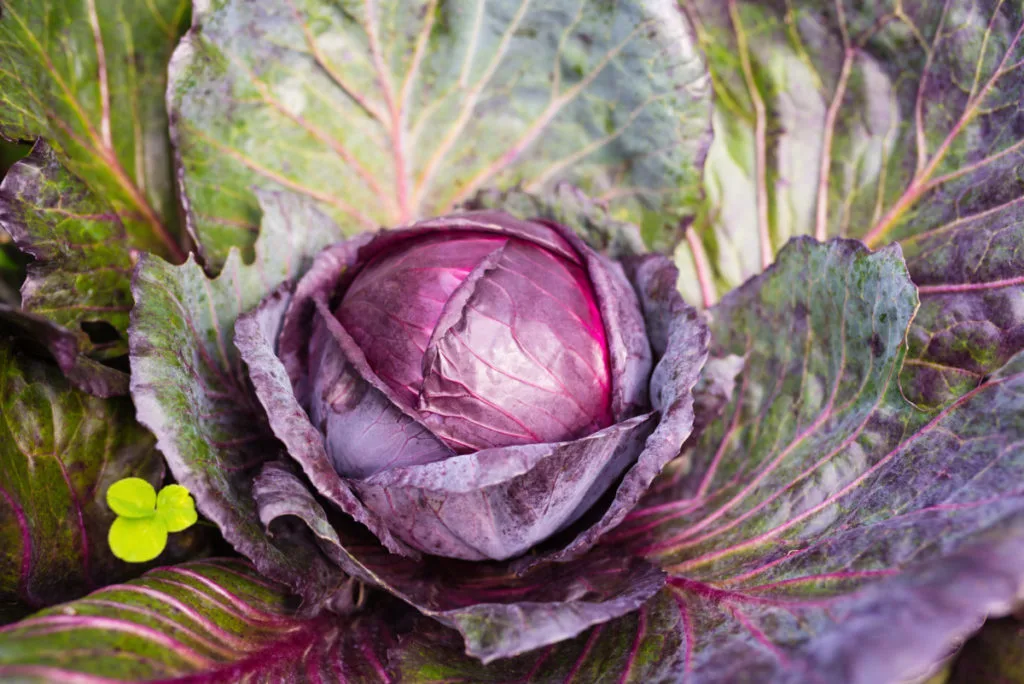
Now, I know red cabbage isn’t anything new or exciting when it comes to purple veggies. You should give this one a grow anyway; not only is this cabbage purple (ignore the red in the name, we know purple when we see it), it’s a quick grower too. You’ll be enjoying purple cabbage before you know it.
Purple sauerkraut anyone?
4. Black Nebula Carrots
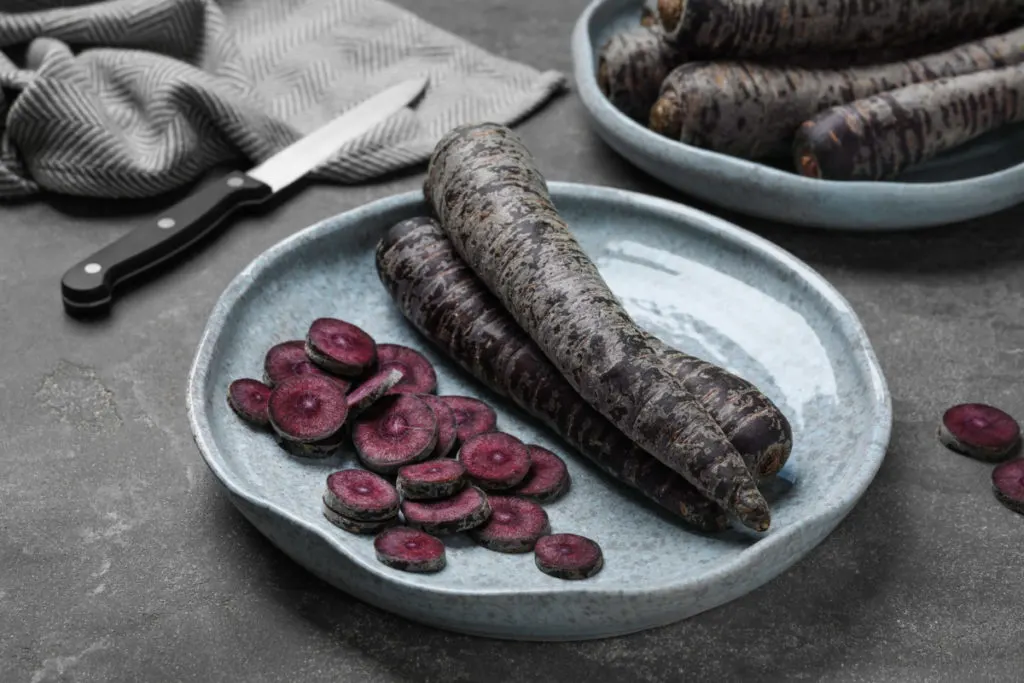
The color of these carrots is almost unbelievable. The Black Nebula carrot is loaded with antioxidants and vitamin C as well as anthocyanin. Talk about a superfood!
I’ve always found purple carrots make gorgeous pickles too. Grow these incredibly deep purple carrots and start a quick batch of pickled carrots! Then save the purple brine for the most beautiful dirty martini you’ll ever sip. You’ll be glad you did.
5. Purple Lady Bok Choy
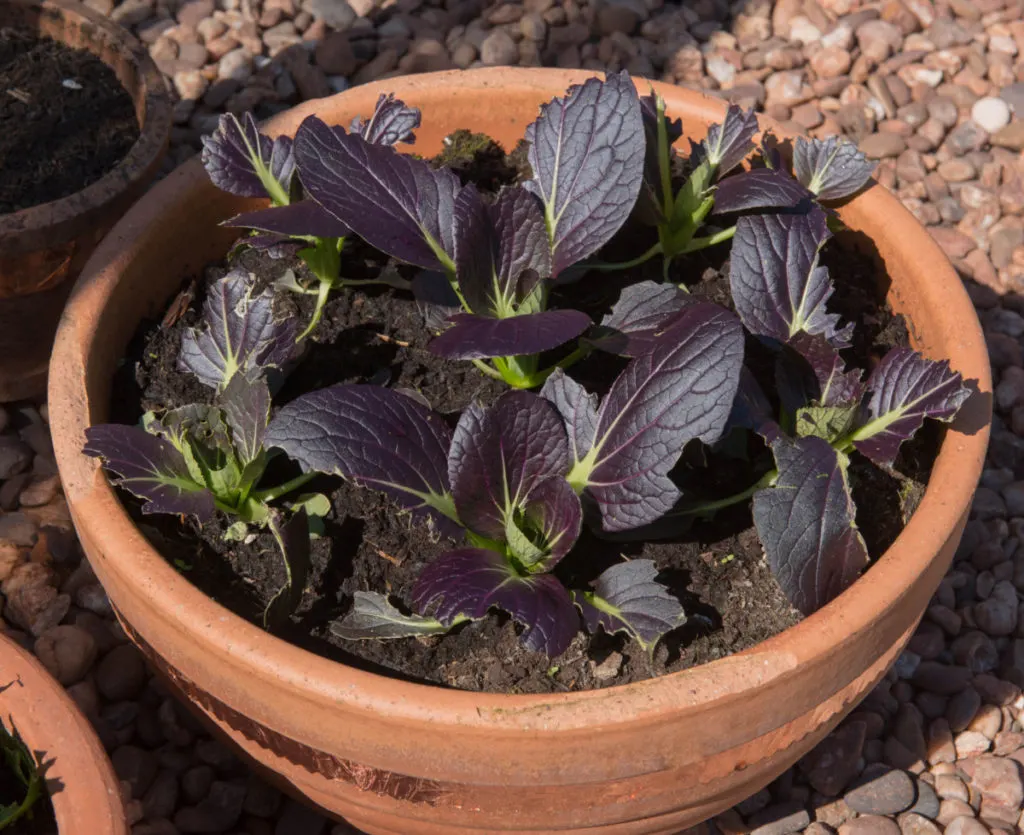
Jazz up your ramen or stir fry with this beautiful bok choy. I’ve grown this before, and the flavor is wonderful. The large, leafy plants grow quickly, so plant several succession crops scattered over a few weeks and enjoy it all season long.
6. Purple Teepee Beans
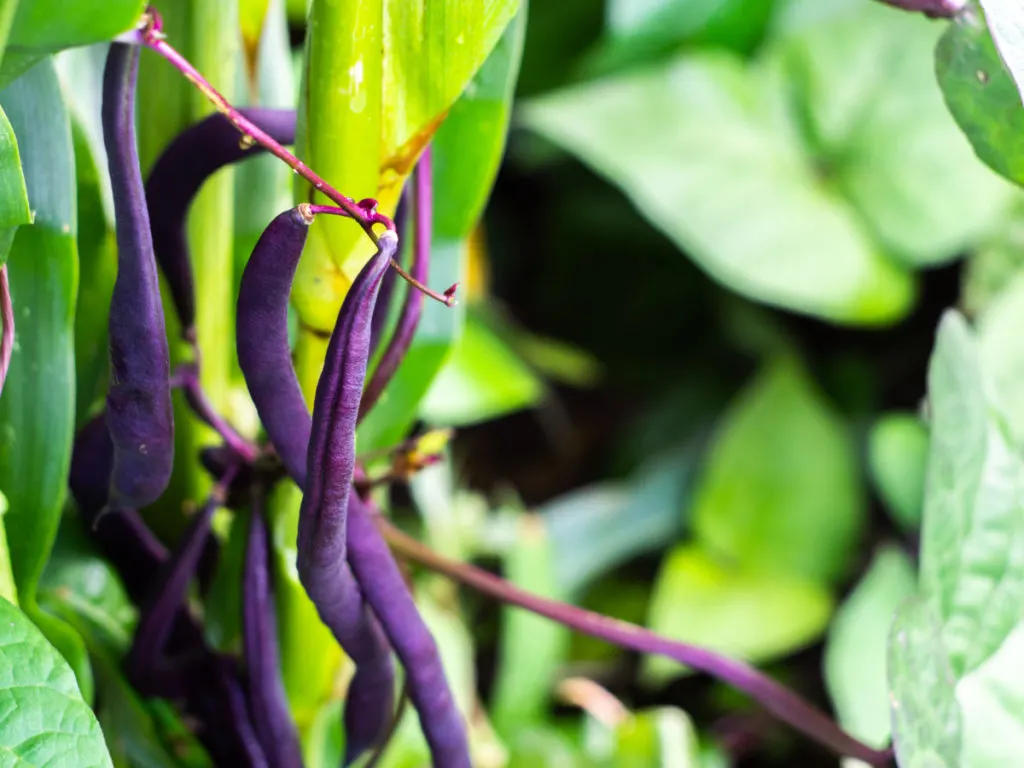
These beautiful beans are just as easy to grow as any other bush bean, so why wouldn’t you plant some? If you’re looking for a bean that keeps producing over and over again, it’s hard to top this one. And purple beans are great fun if you’ve got kiddos. When you cook them, they magically turn green! Of course, it’s up to you to figure out how to get your kids to eat them after that.
7. Detroit Dark Red Beet
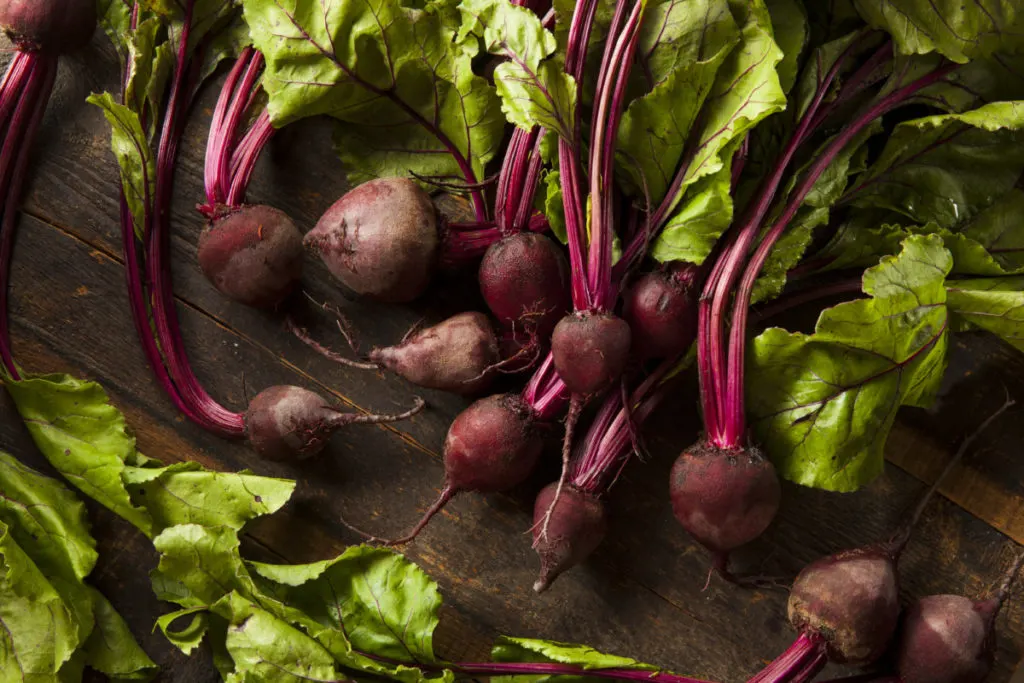
You can’t have a list of purple vegetables without having beets on it. Okay, okay, so it’s more burgundy than purple, but you should still grow them. And don’t forget to eat the greens! If you want to turn those boring old beets into the ultimate superfood, consider fermenting them – probiotics and anthocyanin!
8. Scarlet Kale
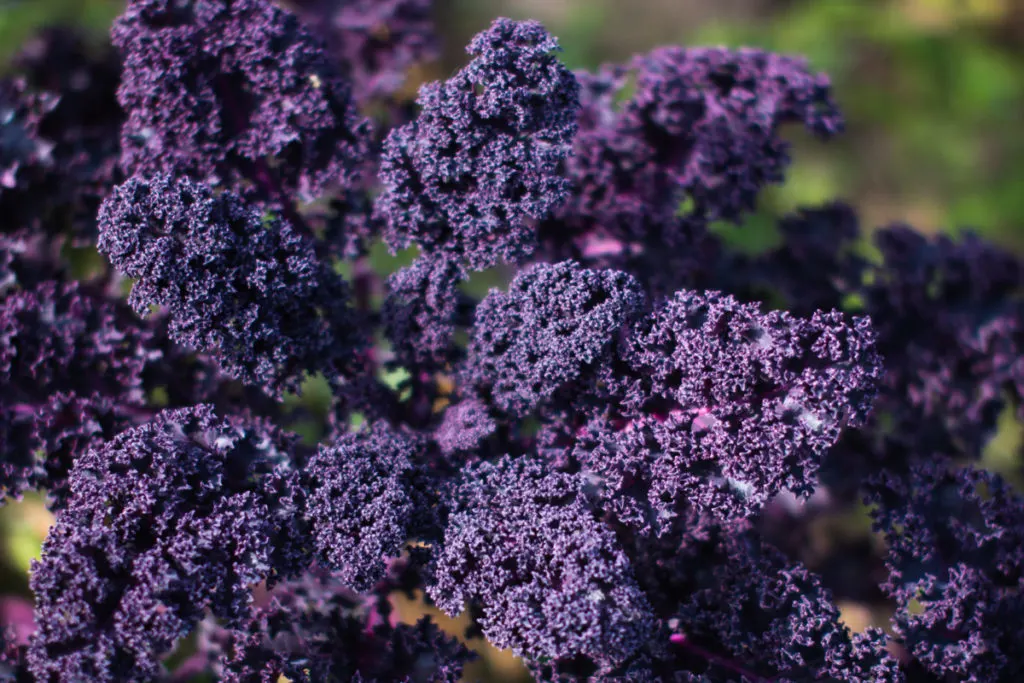
It took me forever to get on the kale train. I resisted this super-healthy veggie for as long as I could. And then I tried kale chips. Now, I can’t imagine a garden without this easy-to-grow veggie.
Grow Scarlet kale for beautiful and tasty kale chips, kale salads, even smoothies. It’s so beautiful you could easily plant it right in the flower bed and enjoy its beautiful leaves along with your flowers too.
9. Pusa Jamuni Radish
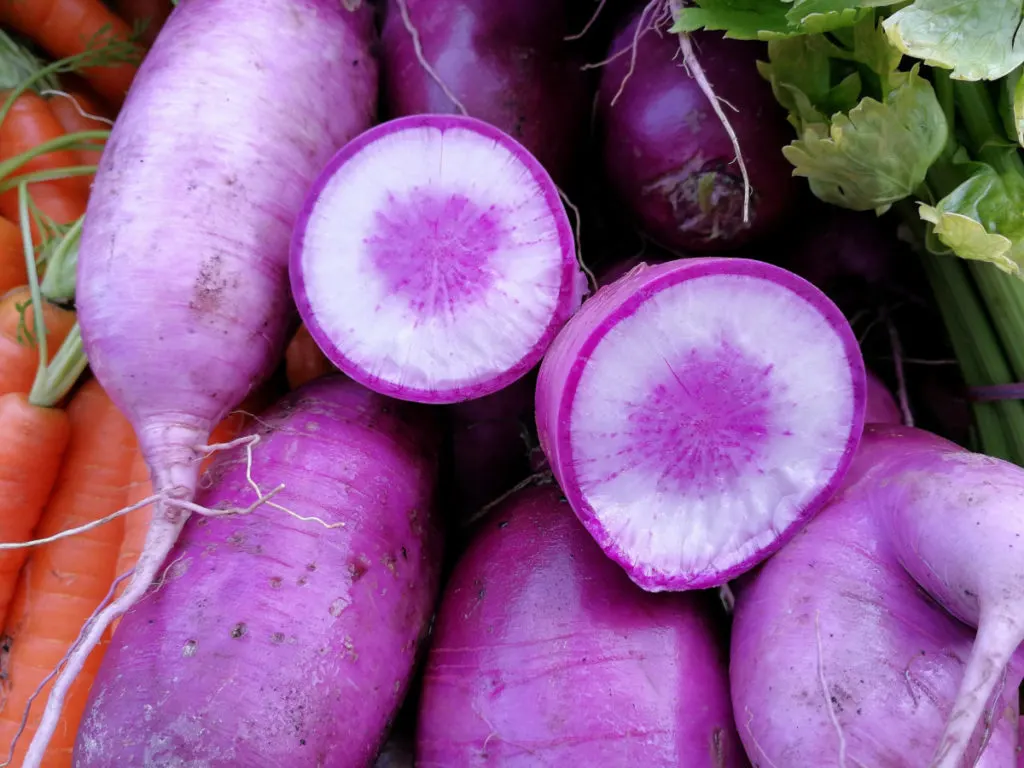
If you’re a fan of radishes (hello, friend), you’ll want to give this unique lavender-colored radish a try. It looks so unassuming on the outside, but once you slice it open, it’s a gorgeous kaleidoscope of purple streaks. Plant this heirloom radish in the fall for the best results.
10. Tomatillo Purple
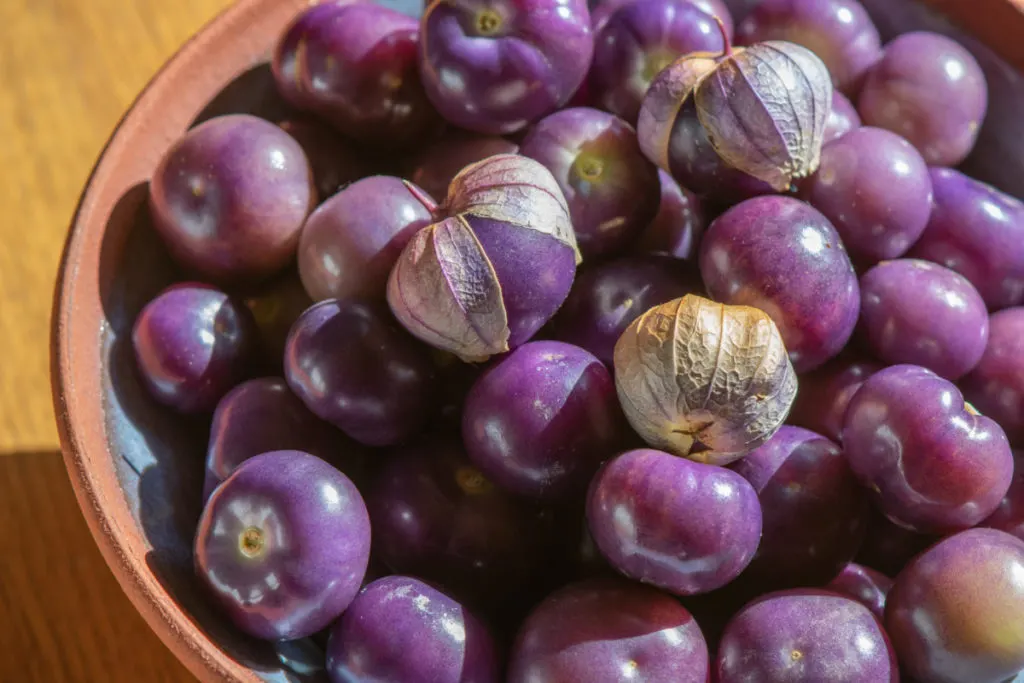
The name might be quite simple; however, you’ll find this tomatillo is anything but. Eat tomatillos right off the plant? You bet with this gorgeous purple variety. These tomatillos are much sweeter than their green cousins. Be sure they get plenty of sun to ensure deep purple fruit.
With a few other purple veggies from this list, you could have a purple taco night! Just make sure I get an invite.
11. Purple Majesty Potato
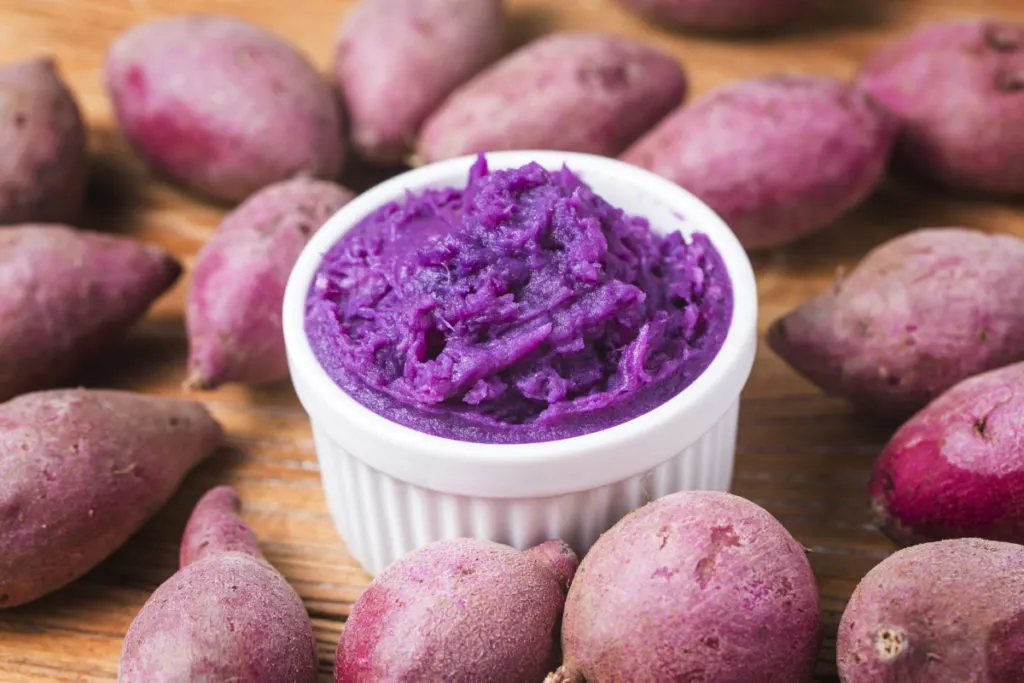
There are so many delicious potato favorites to eat. What’s yours?
Now imagine that potato dish in purple. Purple potatoes are just as easy to grow as any other spud. You can even grow them in containers. And as far as anthocyanidins go, these potatoes are loaded. Get it? Loaded potatoes? I’ll stop.
12. Lilac Bell Pepper
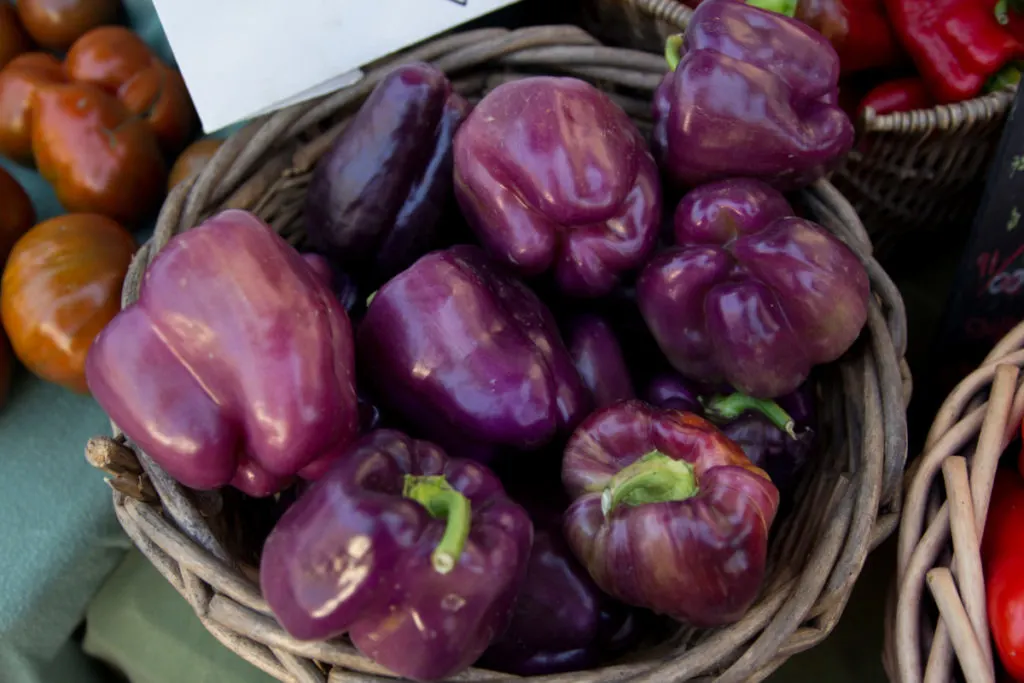
I’ve seen purple bell peppers before, but none as beautiful as this variety. Most are so purple they’re almost black; however, this pepper is a lovely rich lilac. Like other purple bells, it starts out green before turning purple as it ripens. If you’re tired of boring green peppers, give this bell a try.
13. Ping Tung Eggplant
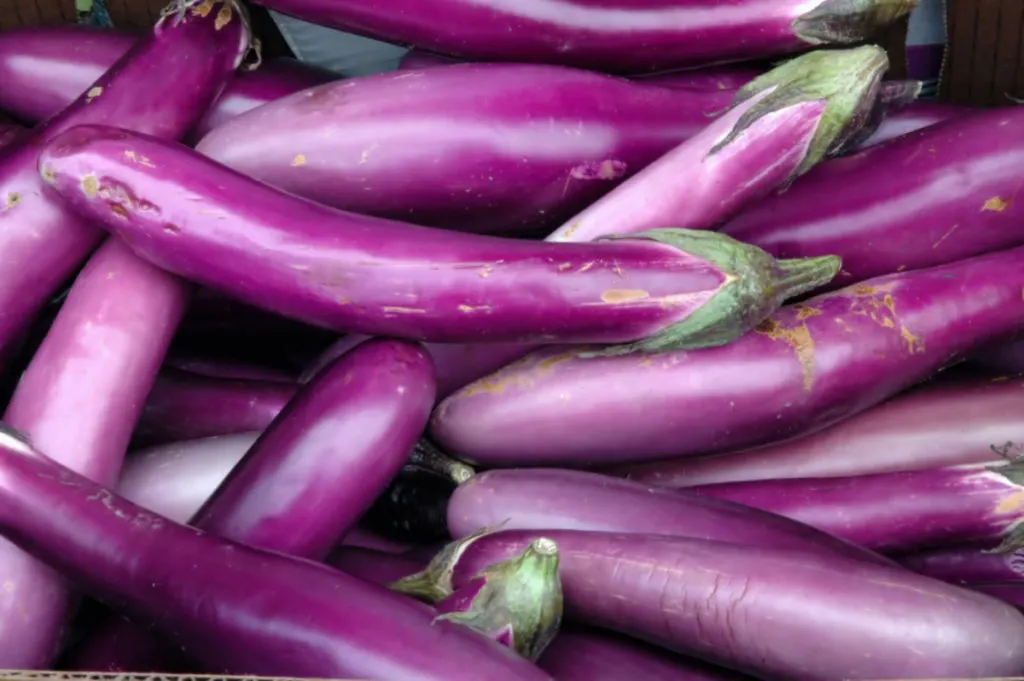
Of course, eggplant is going to be on this list. But again, who wants boring old eggplant? Most of the time, the skin is too tough, and they’re hard to slice.
Dear Reader, let me introduce you to my favorite eggplant variety, the Ping Tung eggplant. This Chinese variety produces long and slender fruits with thin skin. These tender and tasty eggplant rarely get bitter.
Read Next: How To Grow More Eggplant Than You Thought Possible
14. Mountain Morado Corn
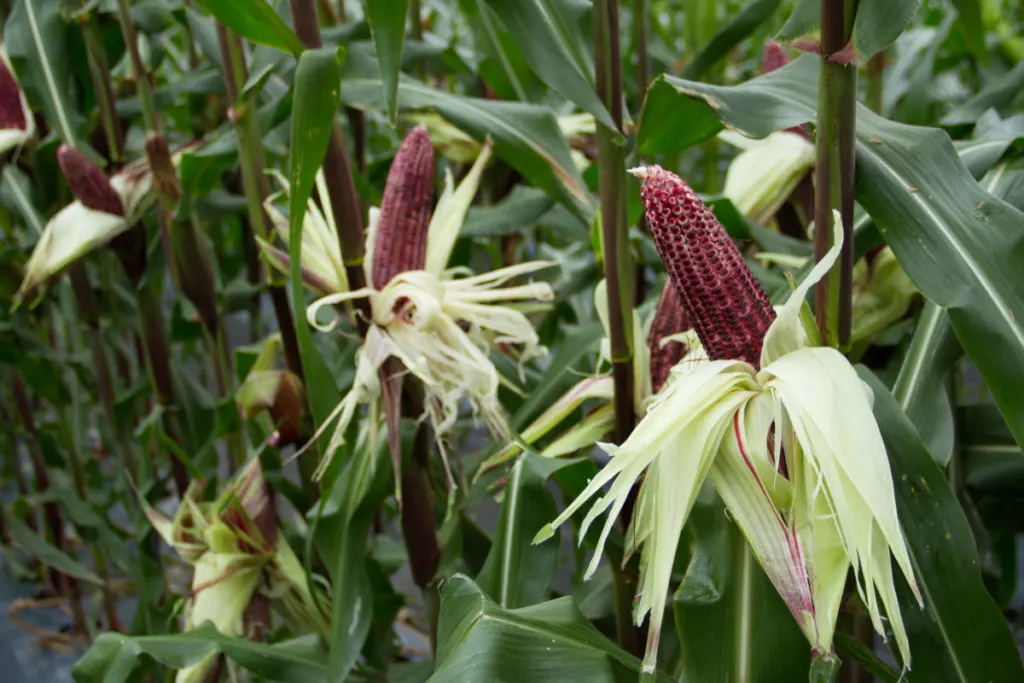
If you’re hoping for blue corn tacos and tortillas, you’re going to want to plant plenty of mountain Morado corn. This flour corn was bred specifically to do well in cool Northern climates. You can generally expect two ears of corn per plant, so if you’re serious about milling it, you’ll need to plant quite a bit.
15. Purple of Sicily Cauliflower
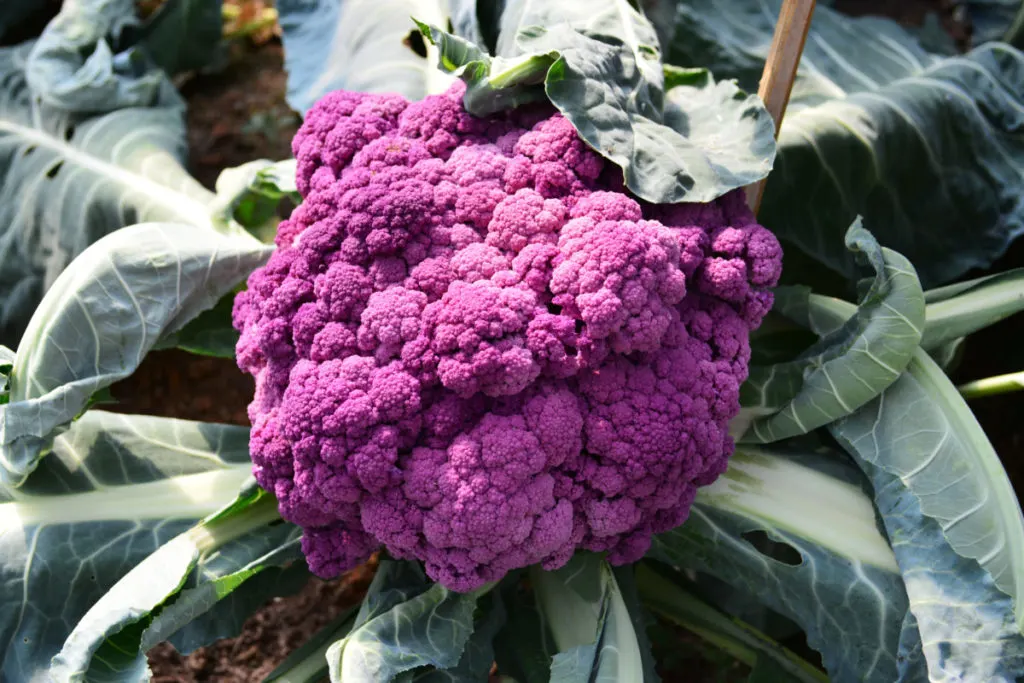
With the popularity of low-carb diets, cauliflower has become a stand-in for everything from rice to mashed potatoes. Add a little color to your favorite cauliflower keto dishes with these beautiful purple heads – while it’s purple when it’s raw, the cauliflower turns bright green once it’s cooked. If you’ve struggled to grow other cauliflower in the past, try this one as it’s much easier.
See? That’s a whole lot of purple. You could easily plant an entire garden full of anthocyanidins and be all the healthier for it.
Now, how about an all pink garden? Have you seen this celery?

Get the famous Rural Sprout newsletter delivered to your inbox.
Including Sunday musings from our editor, Tracey, as well as “What’s Up Wednesday” our roundup of what’s in season and new article updates and alerts.

